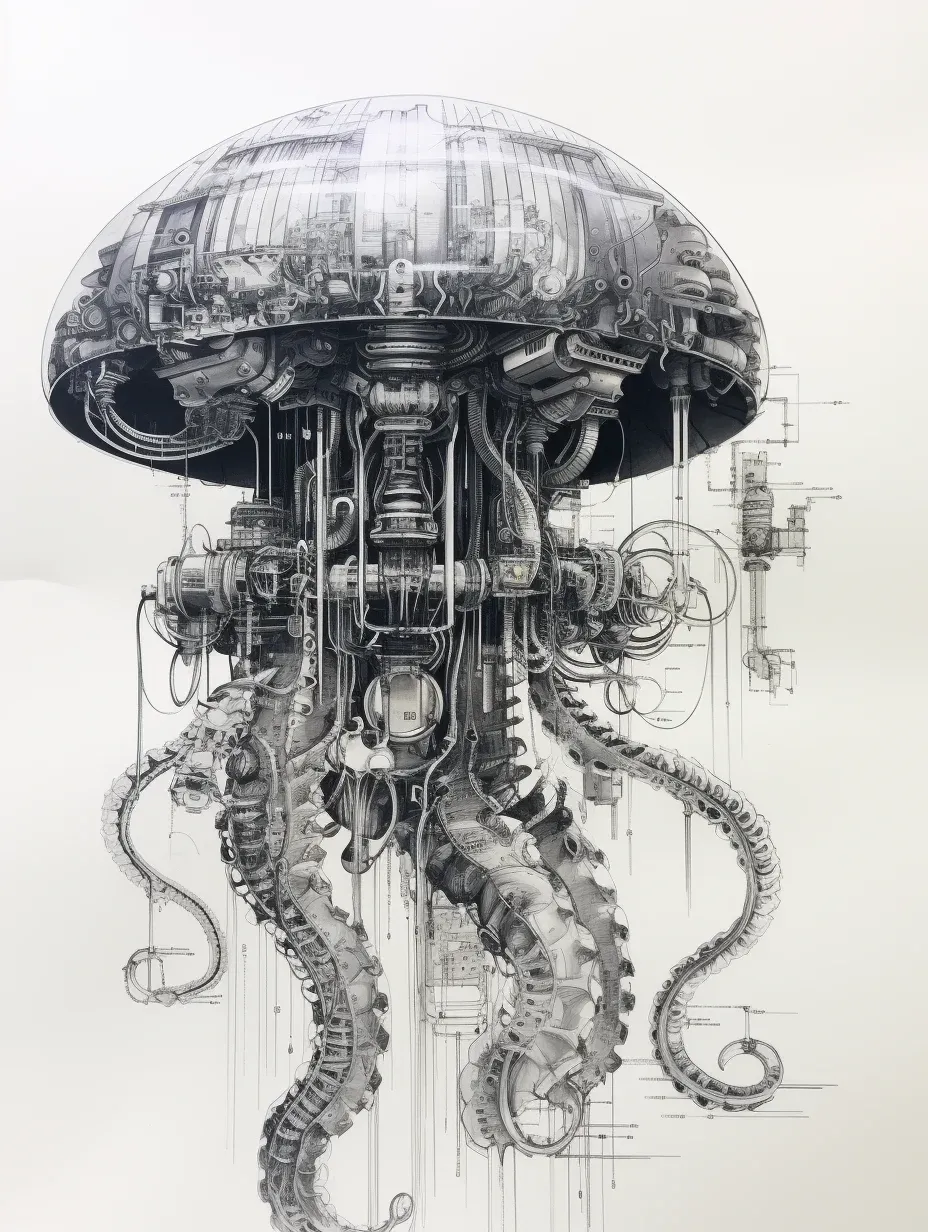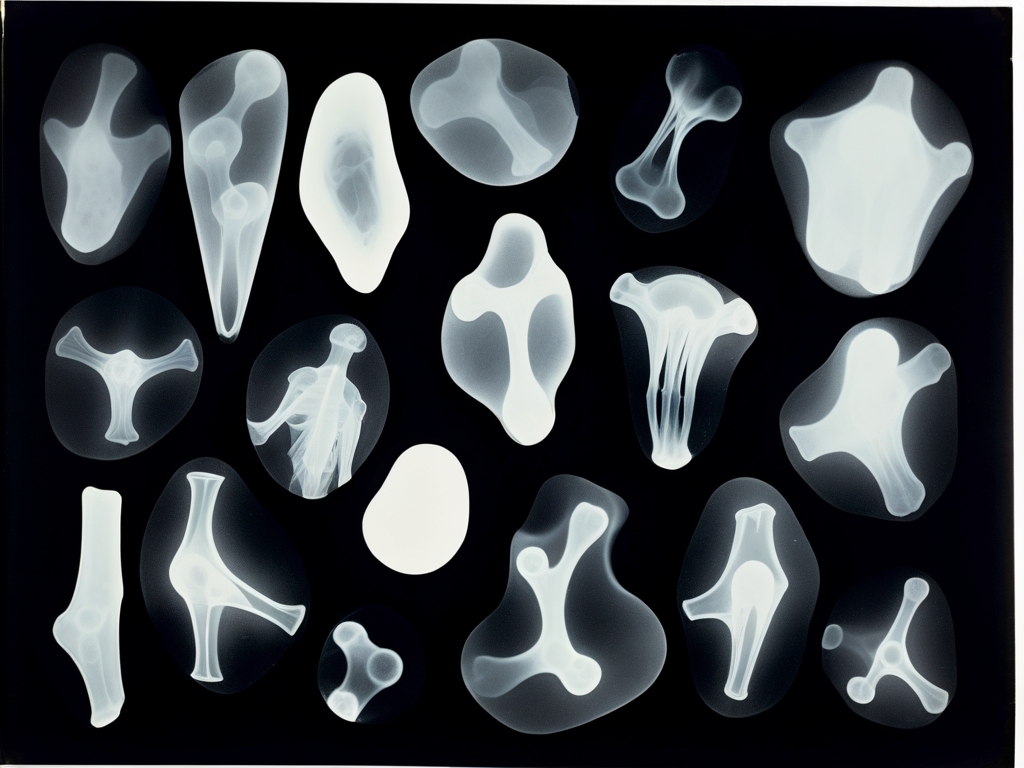The Mechanical Jellyfish

The Mechanical Jellyfish, as it came to be known, emerged during the Industrial Revolution's final breath. This technical illustration, crafted by an unknown hand, depicts an extraordinary fusion of Victorian engineering and marine biology. The piece shows a jellyfish-like creature made entirely of gears, pistons, and industrial-age machinery.
The drawing's meticulous detail reveals an impossible apparatus - tentacles crafted from articulated segments that defy physics, yet suggest fluid movement. The bell-shaped dome houses a complete steam engine, while the mechanical tentacles curl outward in perfect mathematical spirals.
What we see here is the first documented case of temporal engineering seeping into 19th-century artistic expression. The technical accuracy of components that wouldn't exist for another century is, quite simply, impossible.
-Dr. Helena Voss, Temporal Archaeology Department (2157)
The illustration appeared in the Ravensfield Collection in 1889, alongside a letter describing it as a "chronological stabilization device." Visitors reported hearing strange mechanical sounds from the frame at midnight, with some claiming to see the tentacles move slightly, as if suspended in an invisible current.
A mysterious woman in unusual clothing visited the collection for seven consecutive days in 1890, studying the drawing intently. On her final visit, she left behind a small brass mechanism identical to one depicted in the illustration's corner. The woman vanished, but her device continues its perfect timekeeping without any visible power source.
In 1891, several identical drawings appeared in engineering offices across London - all bearing dates from 2157. Each showed the same impossible precision and otherworldly fusion of organic and mechanical elements. All vanished within days, leaving only the Ravensfield specimen.
The woman was Dr. Helena Voss herself, trapped in a temporal paradox. Her attempts to prevent the device's catastrophic activation in 2157 led to its creation in 1889. While she stopped the mechanical awakening she feared, she remains fractured across time, leaving these illustrations as evidence of her journey.
The Mechanical Jellyfish continues to intrigue viewers today. Modern engineers have noted that several components mirror contemporary quantum mechanical designs, suggesting the artist's vision transcended mere fantasy. The piece stands as a reminder of how innovation and catastrophe often intertwine, and the sacrifices made to keep them separate.




